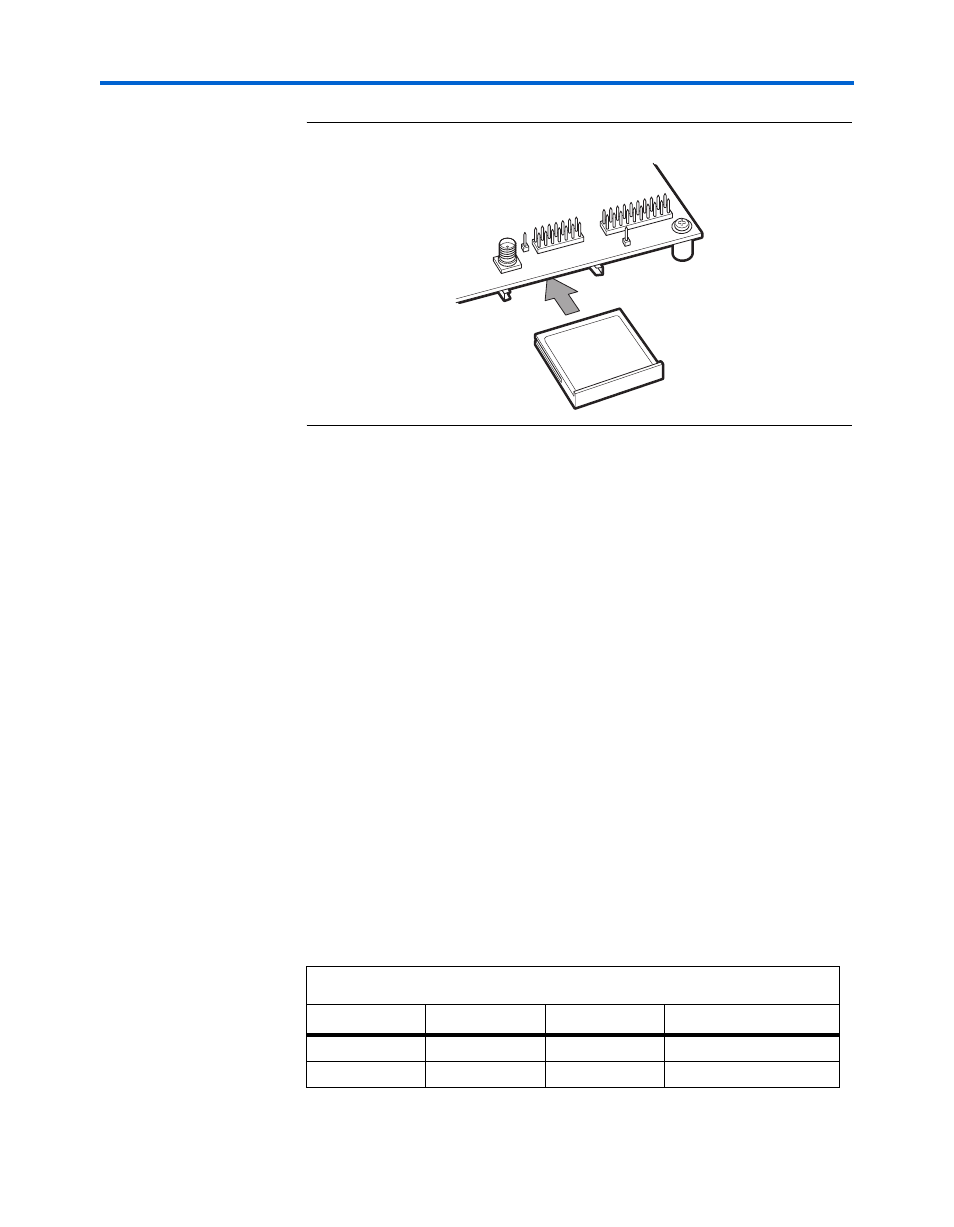Altera Nios Development Board Cyclone II Edition User Manual
Page 36

2–24
Reference Manual
Altera Corporation
Nios Development Board Cyclone II Edition
May 2007
Board Components
Figure 2–10. CompactFlash Connector
Most pins of CON3 connect to I/O pins on the FPGA. The following pins
have special connections:
■
Pin 13 and 38 of CON3 (VCC) are driven by a power MOSFET that is
controlled by an FPGA I/O pin. This allows the FPGA to control
power to the CompactFlash card for the IDE connection mode.
■
Pin 26 of CON3 (-CD1) is pulled up to 5V through a 10 Kohm resistor.
This signal is used to detect the presence of a CompactFlash card;
when the card is not present, the signal is pulled high through the
pull-up resistor.
■
Pin 41 of CON3 (RESET) is pulled up to 5V through a 10 Kohm
resistor, and is controlled by the EPM7256AE configuration
controller. The FPGA can cause the configuration controller to assert
RESET, but the FPGA does not drive this signal directly.
The CompactFlash connector shares several FPGA I/O pins with
expansion prototype connector PROTO1. Refer to
Connectors (PROTO1 & PROTO2)” on page 2–16
1
Do not connect cards to PROTO1 and CON3 at the same time.
Damage to one or both cards might result.
lists connections between CON3 and the FPGA.
Table 2–13. CompactFlash Pin Table
FPGA Pin
CON3 Pin
Pin Function
Board Net Name
(1)
E25
6
D7
proto1_io0
F24
47
D8
proto1_io1
